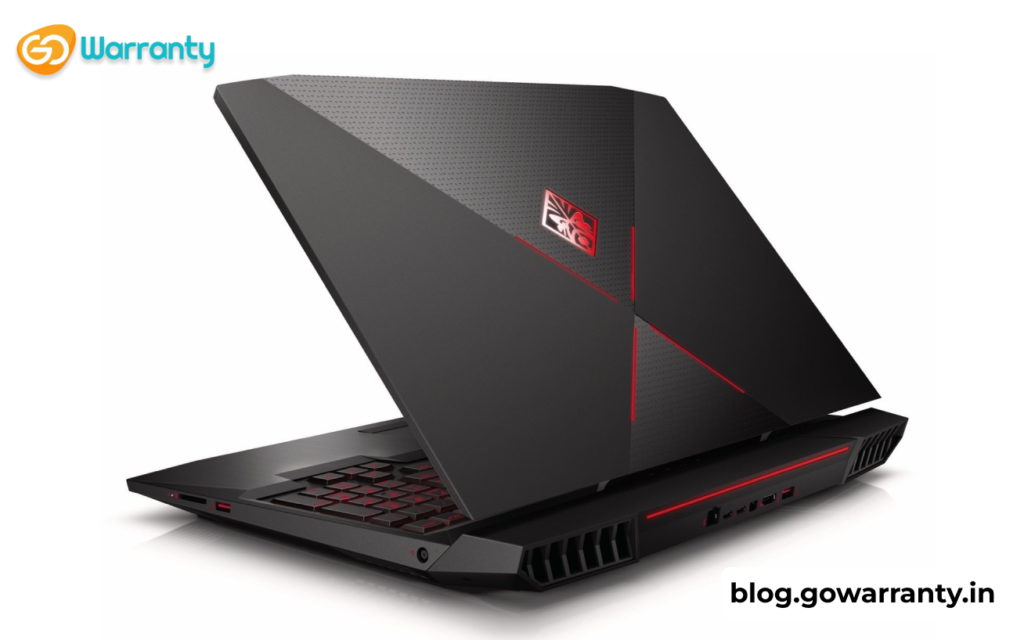The 2023 model of the HP Omen 17, a high-end gaming laptop, retains the same case as its predecessor but includes updated hardware: Raptor Lake and Ada Lovelace processors power the laptop. HP combines a Core i9 processor with an RTX 4080 GPU, charging nearly 3,300 Euros ($3,582) for the entire package. Laptops such as the Alienware m17 R5, the Razer Blade 16 (Early 2023), Asus ROG Strix G16 G614JZ, as well as the Lenovo Legion Pro 7 16IRX8H are among the competitors.
Display
The matte 17.3-inch display (2,560 x 1,440 pixels) meets the requirements for brightness and contrast (> 300 cd/m2 and 1,000:1). However, among our competitors’ displays, the Omen display has the lowest brightness. The Legion 7 Pro has the brightest display in this group. The display can almost completely cover the sRGB colour space, but not the Adobe RGB or DCI-P3 colour spaces. Most competitors’ displays perform better here, with only the Legion panel performing at the same level

Performance
Hewlett Packard’s Omen 17 is a 17.3-inch laptop that is designed for QHD gaming but also performs well in other areas that require high performance. Raptor Lake and Ada Lovelace chips provide the necessary computing performance. Our Omen test unit costs around 3,300 Euros (approximately $3,582).
Processor
The Core i9-13900HX processor (Raptor Lake) has sixteen Efficiency cores (no hyperthreading, 1.6 to 3.9 GHz) and eight Performance cores (2.2 to 5.4 GHz), for a total of 32 logical CPU cores. In normal operation, the processor runs the Cinebench R15 CPU tests at medium-high to high (multi thread) as well as high to maximum (single-thread) clock speeds. While single-thread performance (254 points) suffers slightly in battery mode, multithread performance suffers significantly (1,303 points).
System Performance or DPC Latencies
The system runs smoothly and provides adequate computing performance for power-hungry applications such as rendering and gaming. Working memory transfer rates range at normal levels for DDR5-5600 storage. They are accompanied by favourable PC-Mark scores.
The standardised Latency Monitor test (web browsing, 4k video reproduction, and Prime95 high load) reveals some unusual behaviour. The system does not appear to be suitable for real-time video and audio processing. Future software updates may result in some improvements or make things worse.
Storage Solution
The HP Omen 17 has room for two PCIe 4 SSDs in M.2-2280 format. The PCIe 4 SSD (1 TB) from SK Hynix used here has very fast transfer rates. However, we see some performance drops in the later parts of the DiskSpd loop, which are most likely due to thermal throttling.
Graphics Card
HP employs the current number two in Nvidia’s mobile GPU portfolio with the GeForce RTX 4080 Laptop GPU. It has 7,424 shaders, a 192-bit bus, and fast GDDR6 storage (12,288 MB). According to Nvidia, the RTX 4080 has a TGP of 175 watts (150 W + 25 W Dynamic Boost), which is the maximum configurable. The TGP isn’t fully utilised in our The Witcher 3 test.
The benchmark results are lower than the average of the RTX 4080 GPUs we’ve tested thus far. The “Performance” profile will result in some minor increases in graphics performance on occasion. The dGPU mode will not result in any further advancements. Changing between the dGPU and Optimus does not require a restart – Advanced Optimus is supported.
Gaming Performance
The HP Omen 17, which is designed for QHD gaming at high to maximum settings, can also support higher resolutions when connected to the appropriate monitor. The frame rates of the games we tested are lower than the average of all the RTX 4080 GPUs we’ve tested so far. The “Performance” profile results in a slightly higher-than-average increase in frame rates. In some games, the dGPU mode can provide an additional increase.
Emissions
Noise Level
The constantly running fans are clearly audible during normal operation (Office, Internet) and during idle operation. Under heavy load (stress test, The Witcher 3), the noise level rises even further, with volumes reaching up to 50 dB (A). The “Performance” mode causes the noise level to rise faster to its maximum and then remain there. The noise consists of some whirring and a soft whistling.
Temperature
The case temperatures remain within the green range during normal operation (Office, Internet). The laptop heats up noticeably under load (stress test, The Witcher 3), but this remains within limits – at least at the top. The CPU temperatures are not cause for concern.
Power Consumption
The power consumption is typical for the hardware used. The power consumption remains constant during our The Witcher 3 test, and it drops after a few minutes during the stress test – the CPU is throttled. The included power supply (330 watts) is sufficient.
Battery Life
The Omen’s battery life is insufficient. Even a powerful gaming laptop with an 83-Wh battery should be able to last longer in Optimus mode. We were unable to determine whether this was due to a hardware or software issue until now.
The log files reveal one indication of the issue: During the low-load runtime tests (WiFi, idle, and video), the GeForce GPU should be turned off and the iGPU should do all of the work. However, the GeForce GPU frequently runs at maximum speed here – at 0% load. This results in a power consumption of up to 45 watts, according to GPU-Z.
Verdict
HP delivers a powerful QHD gaming laptop in the high-end segment with the Omen 17. The laptop’s Core i9-13900HX processor and GeForce RTX 4080 Laptop GPU should allow it to perform well in other areas such as video processing and rendering. A fast PCIe 4 SSD (1 TB) provides the required storage space while also ensuring quick load times. There’s also room for a second SSD. The processor and graphics core can maintain constant high clock speeds. Noise and heat generation are at high levels, which is typical for this laptop class. However, in normal operation, the laptop makes too much noise.

